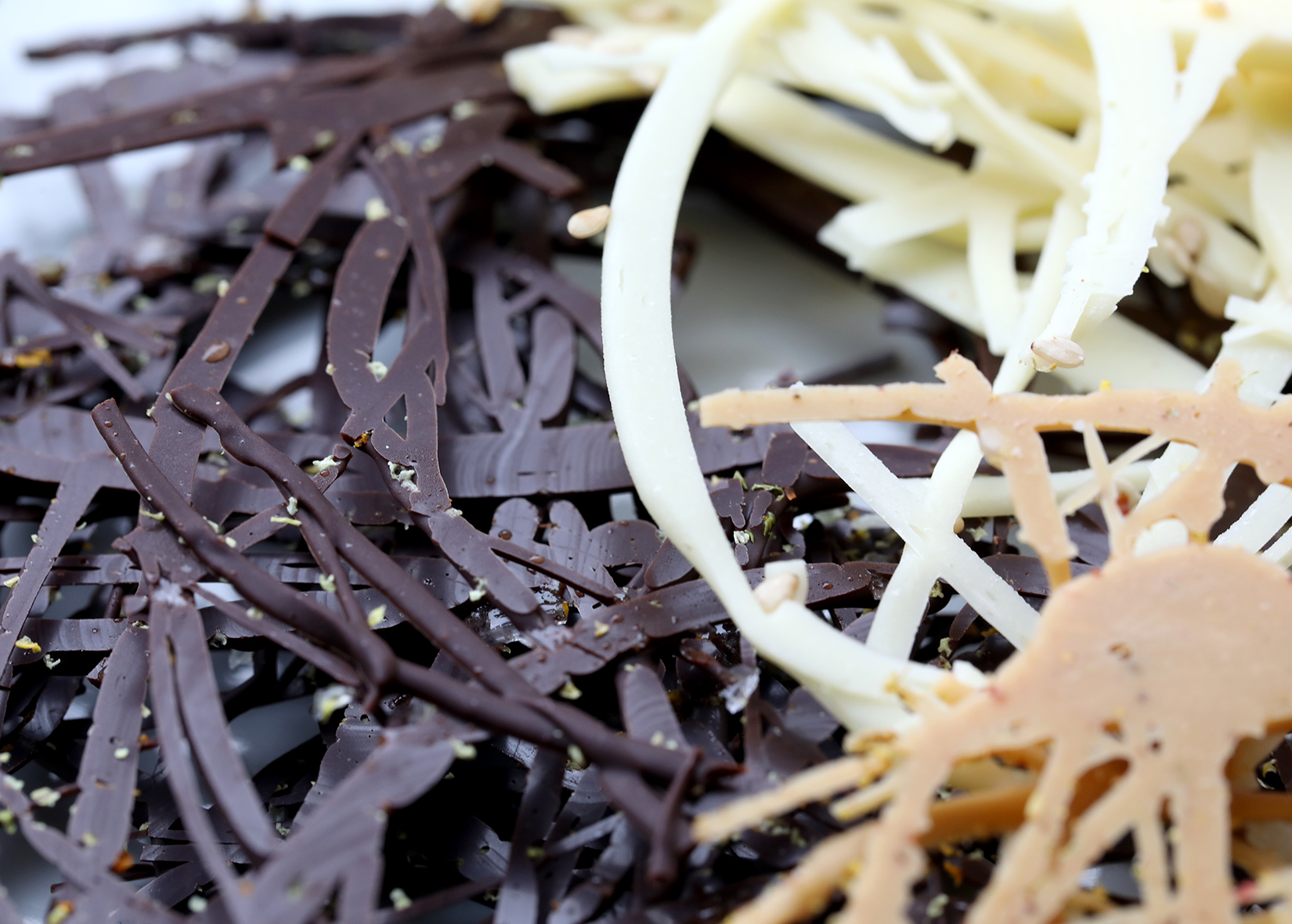Instructions
Share
Place citrus zest on a paper towel and microwave for one minute; continuously monitor to ensure zest doesn’t burn. If not dry after one minute, fluff with a fork and microwave for 30 more seconds or until dry. Push through a sifter to remove any large particles and set aside in a small bowl.
Temper the dark chocolate. (Tempering chocolate is an essential step for making smooth, glossy, evenly colored chocolate that has a crisp snap with every bite. It also prevents the dull color and waxy texture that occurs as the cocoa fat separates.) Gently heat 2/3 of your chocolate discs (or pieces) over a double boiler, stirring constantly until melted. Chocolate will be melted at 120 degrees. Be careful that no steam or water gets into your chocolate as it is being melted. Cool the chocolate by adding fresh chocolate pieces and constant stirring until it reaches about 84 degrees. Quickly return your bowl to the heat and heat the chocolate to 88-89 degrees, stirring constantly. Chocolate is now tempered and ready to use. Keep the chocolate heated in the double boiler at 89 degrees until the moment you are ready to use. If chocolate hardens and needs to be remelted, or gets above 91 degrees, you must re-temper it.
Line a baking tray with one acetate sheet and place on a large, clean surface area with ample room for the chocolate pot and seasonings in close reach. Be sure the workspace and surrounding area is dry; moisture can ruin the texture and crunch of the chocolate. Using a sifter, dust the citrus zest evenly across the sheet, about 2 Tbsp per sheet. Sprinkle sea salt across acetate sheet in linear motions to cover it consistently but still sparingly, about 1 Tbsp per sheet. Using a large spoon, begin drizzling the hot chocolate onto the baking sheet in artistic, circular motions. Try to maintain an even stream of chocolate so that clumps or bumps do not form. Continue until the entire acetate sheet is covered, as demonstrated in the video.
Place dark chocolate decorative swirls in a cool, dry place or refrigerator for 30 minutes to harden. Continue additional batches with a new sheet of acetate each round until the tempered chocolate is gone.
Return baking sheet of chocolate swirls to clean workspace and test a corner, slowly peeling the artistic dessert garnish off the sheet. If the chocolate is properly tempered, it will snap cleanly and have a sheen on the presentation side (acetate side). Break into medium-sized pieces, as demonstrated in the video, and place on a plate or clean baking sheet, acetate side up, so the shine is revealed. Carefully cover the chocolate with plastic wrap or another baking sheet, being very careful not to touch the chocolate. Store in cool place until ready to serve.
Use as a garnish on ice cream or sorbets, or serve as an accompaniment to coffee service.
Other recommended alternatives to dark chocolate include Valrhona Blanc Ivoire (white chocolate) and Valrhona Dulcey Blond. This dessert can be transformed into Chocolate Spiderwebs for a decadent Halloween party.
Chocovision makes excellent chocolate tempering machines, which allow you to skip steps 2-6. Breville’s The Control Freak and other induction burners also make maintaining the temperature while tempering chocolate very easy.

